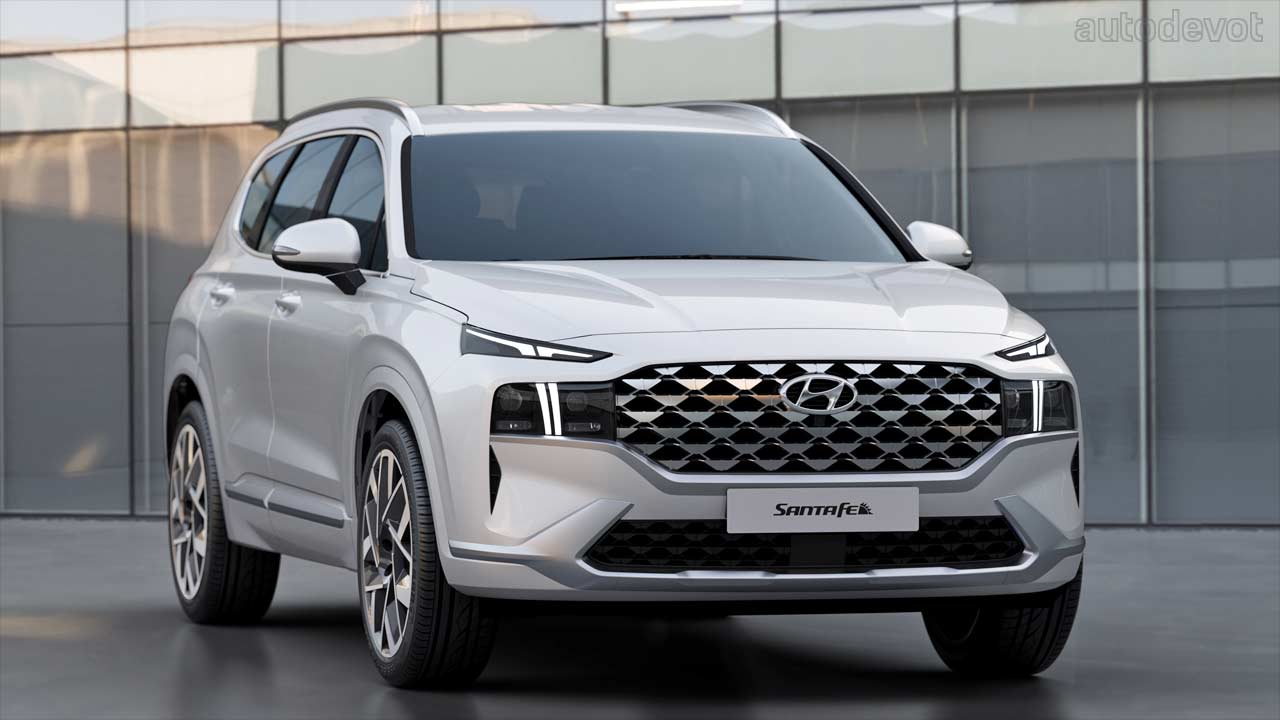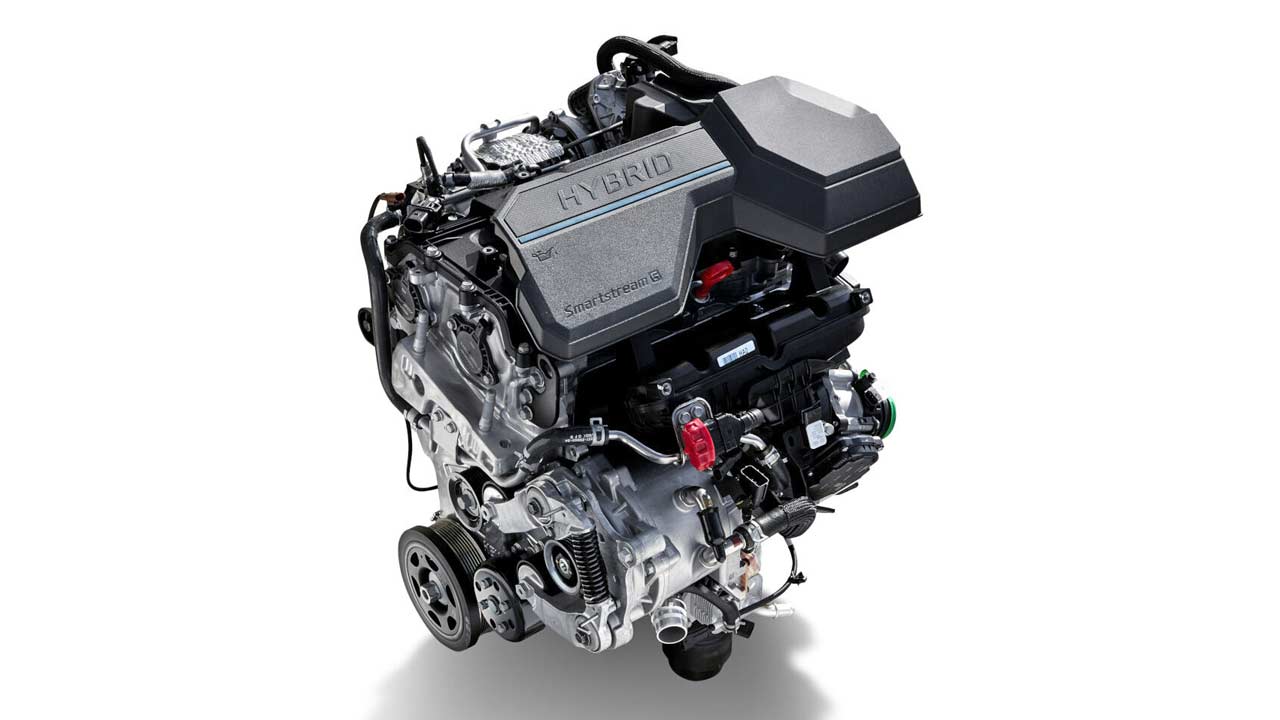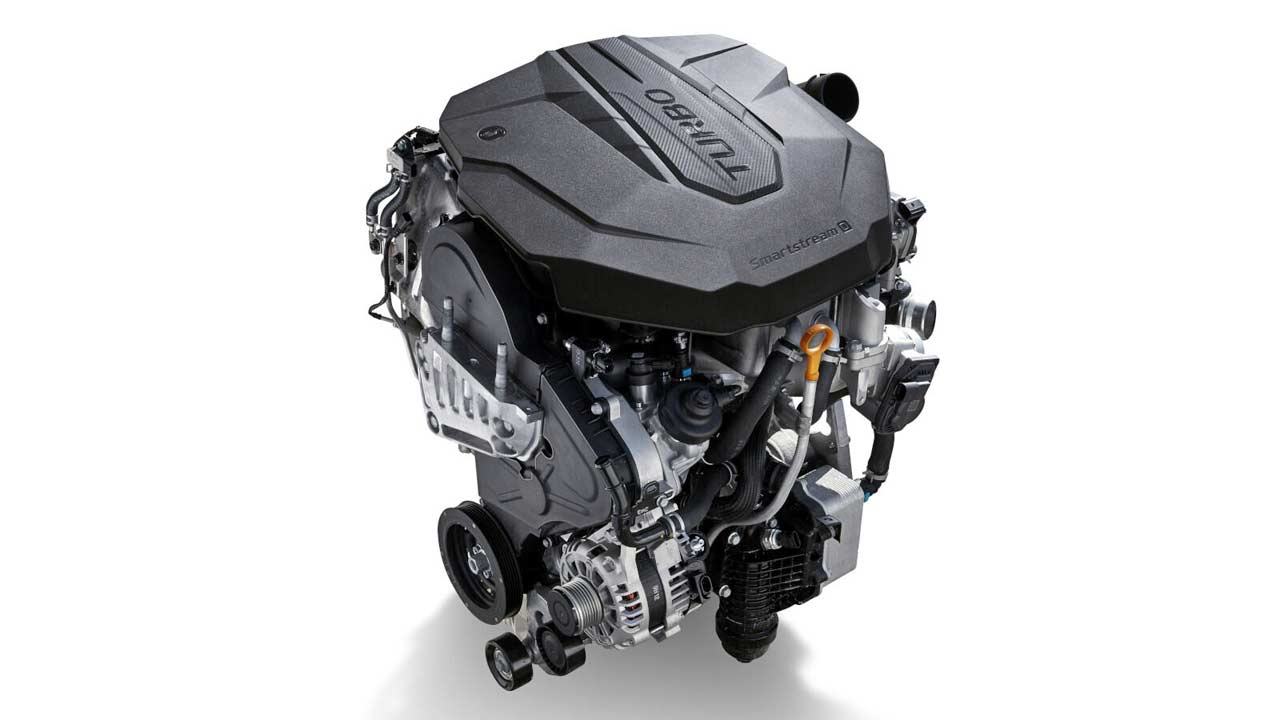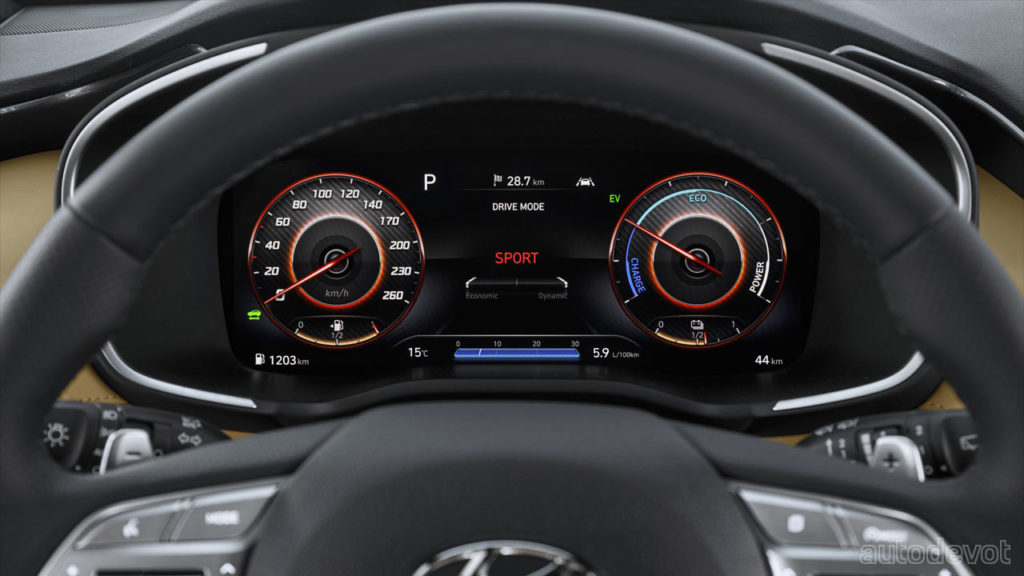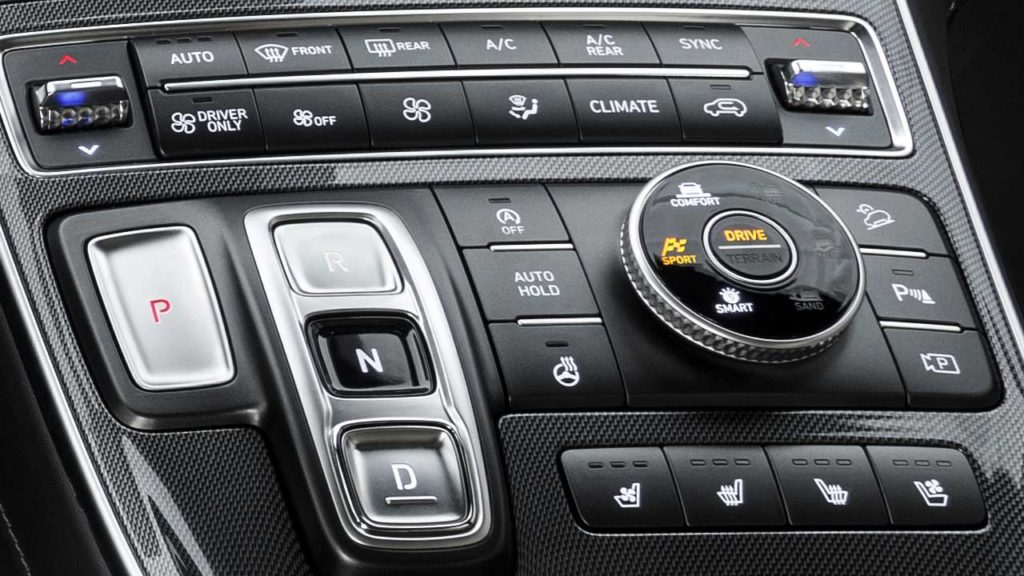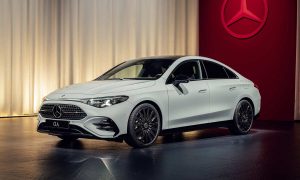The Hyundai Santa Fe facelift, which was revealed recently with a bold new polarising grille, has received hybrid powertrains in addition to the conventional ones. In fact, we are not sure if we should call it merely a “facelift” because according to Hyundai, the new Santa Fe is based on an all-new third-generation platform.
Hybrid
The hybrid powertrain combines a new Smartstream 1.6-litre turbocharged gasoline engine, a 44.2 kW (60 hp) electric motor and a 1.49 kWh lithium-ion polymer battery pack. The combined output is claimed to be 230 hp and 350 Nm (258 lb-ft) of torque. The Santa Fe hybrid will be available later this year (market dependent) both in FWD and AWD versions.
Plug-in Hybrid
Depending on the market, the new Santa Fe will also be available as a PHEV in early 2021. It also combines a Smartstream 1.6-litre turbocharged gasoline engine, a 66.9 kW (91 hp) electric motor and a 13.8 kWh lithium-ion polymer battery pack. The combined output here is claimed to be 265 hp and 350 Nm (258 lb-ft) of torque. The PHEV is available only as AWD.
Both hybrid and plug-in hybrid variants receive a new 6-speed automatic transmission, which is claimed to offer better fuel efficiency.
Diesel
For those who like things conventional, Hyundai is offering a new 2.2-litre turbocharged diesel engine from the Smartstream family. Compared to the previous generation engine, the new engine block is made of aluminum instead of iron, resulting in a weight reduction of 19.5 kg (43 lbs). Various engine components, including the camshaft, have been optimized to reduce internal engine friction and increase fuel efficiency, Hyundai said. In addition, the new engine is equipped with a 2,200 bar injection system (vs 2,000 bar in the previous one). The engine output is now 202 hp and 440 Nm (324 lb-ft) of torque.
The engine is coupled with a new 8-speed wet DCT that debuted with the new Sorento. The diesel variant offers buyers the choice of FWD or AWD.
The HTRAC AWD system in the new Santa Fe offers different driving modes. The power is automatically distributed to all four wheels on slippery surfaces. In Sport mode, the system distributes up to 50% of the torque to the rear wheels. In Comfort mode, up to 35% of the torque is sent to the rear wheels. The Eco mode is only FWD to save fuel.

Leave a Reply
Note: Comments that are unrelated to the post above get automatically filtered into the trash bin.
